PowerCell 4
The new PowerCell 4 is based on an evolution of our now patented Electromagnetic Cell Technology. The PowerCell 4 is non current limiting, is not fused or switched for maximum transparency, and sold with a generic 14-gauge power cord that is Quantum Tunneled along with the PowerCell 4 during the Quantum Tunneling process. Sonically the PowerCell 4 is highly detailed with a sweet treble and controlled low frequency presentation. Its sound staging is more pinpoint to the PowerCell 10 SE MKII’s massive liquidity. Where the PowerCell 10 SE MKII throws the larger and more liquid sound stage, the PowerCell 4 is articulate and able to throw a large and highly focused sound field. This difference is much like the difference between a TESLA SE Precision AC power cord and a TESLA SE Hologram A or Hologram D power cord.
New Electromagnetic Cell Design
The PowerCell 4 is perfect for small systems, monoblock amps that are located far away from the source and preamps, or your source components. The PowerCell 4 also improves picture quality on any display, with darker black levels, better color saturation and a more 3 dimensional picture, simply amazing. 2 TeslaPlex SE receptacles provide 4 outlets in this fully differential designed PowerCell. Fully differential means that the hot, neutral, and ground all have their own separate power paths to and from the magnetic cell. What does this mean? Even better performance, blacker backgrounds, improved dynamics and a more holographic soundstage. Pair with the TESLA SE T3 for outstanding performance.
The POWERCELL STORY
The most important source of one’s music system lurks behind the facings and controls of the audio equipment.
Take a moment to stand back and look deep within and far behind those components. The source you’re looking for is not your CD transport + D/A converter or CDP. It’s not the turntable or its cartridge; it’s not the tuner, or the preamp. Look farther, deeper, back through the tangle of power cords, interconnects and speaker wire. The source you’re looking for begins at the AC wall socket and beyond. The quality, structure, and efficiency of the AC entering your music system play a profound role in the musicality and dimensionality of the music your system can reproduce.
The power supplies within your audio components simply do not have the ability to clear the incoming AC of all radio frequency interference (RFI), digital noise, and electro-magnetic interference (EMI), and other electrical disturbances that household AC brings when it enters your home. It’s simply not their job. This is the job of the AC line conditioner.
Our lead designer Ted Denney’s frustration with the current state of conventional AC power conditioning led to the development of the Tesla PowerCell. His listening tests confirmed at best most line conditioners to date smooth out undesirable aspects of AC contamination offering a somewhat more pleasant overall sound, but at the expense of lost detail, air, and low frequency impact and control. At worst, they tend to compress spatial information and can even degrade high frequency air and transparency especially as current demand increases.
Ted began work on a completely new concept in line conditioning by passing AC through an electromagnetic cell. This new patent pending technology works outside of the signal path to condition alternating current with differential EM fields. Most line conditioners work by placing transformers or chokes in the signal path which create additional problems. These filtering methods act to slow transient response while limiting current resulting in a muddying of low frequencies. That’s why it’s usually not a good idea to plug a power amplifier directly into a line conditioner.
By contrast plugging an amplifier into the Synergistic Research PowerCell actually improves your systems low frequency impact, control, and extension. It significantly increases overall soundstage width and height while dramatically improving front to back layering and air. Midrange texture becomes richer and high frequencies become more extended and transparent while the overall sound is sweeter and more musical. Video monitors and projectors portray images with greater color saturation, less noise with fewer motion artifacts and a sharper more three dimensional appearance.
The Synergistic Research PowerCell is noncurrent limiting. The only limitation being the amount of current provided by your Power Company. In fact, the more components you plug into a PowerCell the more efficient its internal electromagnetic filter becomes resulting in increased performance.
When we built the first PowerCell Ted was eager to test his concept for the world’s first electromagnetic cell to condition AC. He did not want to wait for a metal chassis to be built so we used wood to fabricate the first prototype which was completed late that evening. When we plugged our system into the prototype the sound was flat and dark with a noticeable loss of air. Tired and disappointed Ted left the factory late that evening to contemplate this surprise failure. He had hoped for his first good night’s sleep since becoming obsessed with the development of the PowerCell.
Ted awoke early the following morning to the sound of Eliott’s voice on the telephone. “Ted you need to get in here- now”. When he got to the factory the system had transformed, or more to the point, the PowerCell was breaking in and the dark closed in sound of the night before was replaced by an open transparency he had not heard before. For the next few days the system continued to improve with holographic realism, low frequency impact, and high frequency air better than anything he had yet achieved in his reference system.
Over the next several days Ted envisioned two evolutions in the PowerCell’s circuitry so we built two new variations of the original prototype each better than the last. The first added a filter plate for the return AC while the second included this innovation plus a filter plate for ground. It was this third generation circuit that had by far the best sound.
We were now only a few weeks out from the ’07 RMAF in Denver and Ted wanted to take his prototype to the show so we began fabricating a third generation PowerCell in an aluminum chassis. With only one day to spare we listened to the final PowerCell now clad in aluminum. Much to our surprise the new metal chassis sucked most of the life from the PowerCell. When we compared it to its wooden brother, no doubt about it, the wooden chassis significantly outperformed the PowerCell with an Aluminum chassis. Hoping that the metal PowerCell would open up just as the original PowerCell had done, we brought both variations to the show. Sadly this was not to be the case and the PowerCell made its debut under a blanket in order to hide its modest plywood shell. Fortunately, most show goers were so excited about the PowerCell’s performance that few asked what was under the blanket.
When we got back from the show Ted knew he had a product people wanted to buy but had no idea of how we was going to build it. Totally out of the question was a wooden chassis as was the much-compromised metal version with comparatively weak bass performance and higher noise floor. Thus began a long search for a suitable material that would allow Ted’s electromagnetic filter technology to perform to its full potential. With more time to study the performance differences between metal vs. wood, we found that wood outperformed metal whether or not the PowerCell was switched on or off. Not only was the wooden chassis “invisible” to its EM cell from an electromagnetic standpoint, it became apparent wood was doing a better job of absorbing mechanical vibration from AC. As it turned out the metal chassis PowerCell transferred mechanical vibration to our reference systems power cords and this created confusion and a loss of clarity in the sound of our system. Prior to this Ted had been skeptical of the necessity for expensive carbon fiber AC faceplates that touted superior vibration isolation for improved image focus.
We were forced to find a new material that would be as invisible to the PowerCell’s internal electromagnetic filter as our plywood prototype while offering isolation from mechanical resonance. Our search ended when we found a company in Southern California that CNC’s composite materials into medical and chemical fluid delivery systems. Unfortunately this material was difficult to fabricate and much more expensive than a conventional steel or aluminum chassis. Development was further complicated by the need to find a coating that would maintain the materials piano black finish while resisting scratching. The final PowerCell is a work of groundbreaking art that combines patent pending electromagnetic filter technology with a revolutionary composite chassis that is electromagnetically inert with three times the mechanical vibration isolation of carbon fiber.
QUANTUM TUNNELING
Early in the PowerCell’s development we came to the conclusion that just as all Tesla cables and AC cords benefit from Quantum Tunneling, so too would the PowerCell. To completely tunnel each PowerCell including its internal EM cell and its 6 to 10 AC outlets we first hook up each unit starting from its power cord. The cord is suspended so that the arc from our Tesla coil strikes the three conductors of the power cord. We then attach AC cords to each of the PowerCell’s outlets which are terminated to a lightening rod to dissipate the high voltage to earth. The benefits achieved are the same as they are when we Quantum Tunnel our cables including: enhanced air, improved bass response, a more layered holographic sound field, and a richer mid-range with a blacker background and lower noise floor.

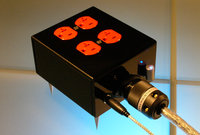
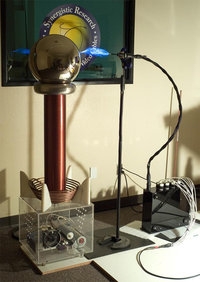

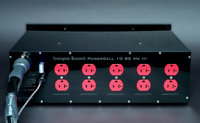
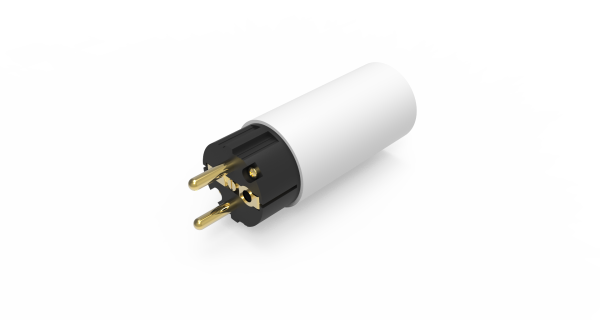
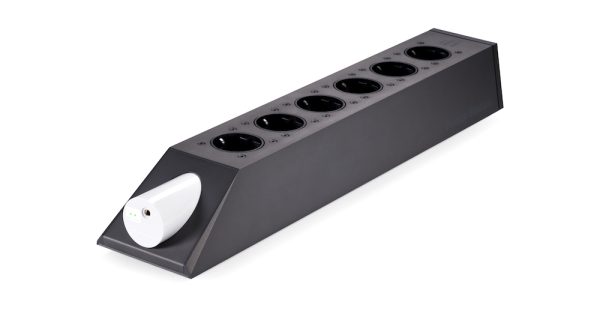
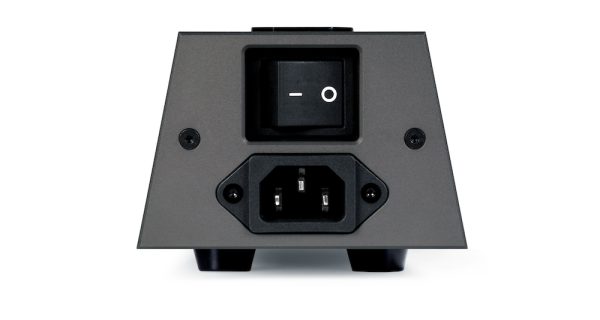
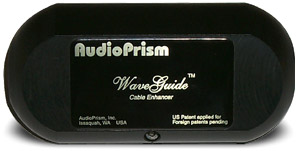
Reviews
There are no reviews yet.